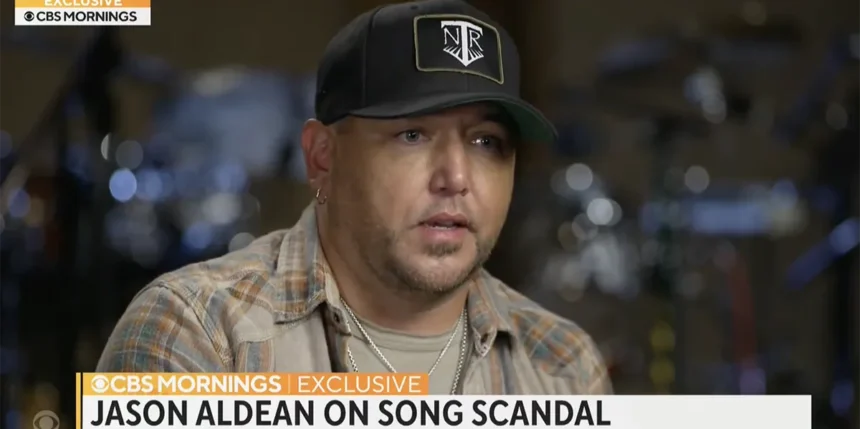Jason Aldean’s hit song “Try That in a Small Town” came out in the spring of 2023 and didn’t really take off until the incredibly powerful music video for it came out over the summer, reigniting a culture war battle over the 2020 “fiery but mostly peaceful protests.” Predictably, the left was incensed that Aldean would suggest residents of small towns might defend their property and fellow citizens, while the right cheered on the message.
Then, the album on which the song sits, “Highway Desperado,” came out on November 3rd. Before it did, Aldean went back to making the media circuits to highlight it. He was doing such on a CBS Mornings interview, during which he stood by the song’s message after the leftist journalist interviewing him tried to attack it and put him on the defensive.
It began with CBS Mornings’ Gayle King saying, “An exclusive and frank conversation, we should say, with country music star Jason Aldean. So he’s been drawing both praise and criticism for his hit song. It’s called ‘Try That in a Small Town.’”
After playing a clip of the song, King said, “Now, critics say the song and its music video is full of racial undertones and threats of violence. It’s now one of the singles on Aldean’s new album, whidch is called Highway Desperado. It comes out this week. Our Jan Crawford met up with Aldean at the studio in Nashville where he recorded it. This is his first network news interview about the controversy.”
The video then cuts to Crawford’s interview with Aldean. After asking Aldean a few questions about his career and background, Crawford played a clip of people attacking the song, saying, “Jason Aldean’s song is racist. And if you can’t see that you’re part of the problem. What he talked about was people who steal people who carjack people who burn flags, and you interpret that as he must be speaking about black people.”
Crawford then attacked the song, putting Aldean on the spot and asking what he thought about critics saying the song was threatening to black people: “Supporters felt the song upheld small town values in uncertain times. While others heard racism and subtle calls for violence, what was your reaction when you saw people saying that this had racist undertones? And you know, it was like a call to arms you know, it was like a call to arms and small towns. It was a threatening kind of video for black people.”
Aldean characterized that as ridiculous, saying, “There was people of all color doing stuff in the video. That’s what I don’t understand. You know, there was there was white people in there, there was black people. I mean, this video did not shine light on one specific group and say, that’s the problem. So and anybody that saw that in the video, then you weren’t looking hard enough in the video, it was all I can tell you.”
Crawford then asked Aldean about the courthouse in front of which much of the video was filmed, saying that a lynching occurred there. Obviously, it was a question meant to make Aldean look “racist” and pro-lynching, It didn’t work, as Aldean said, “For anybody that thinks that we picked that building specifically for that reason, because you know, there was a lynching there, whatever. Did you know that no, but I also don’t go back 100 years and check on the history of a place before we go shoot it either. It’s also the it’s also the place that I go get my car tags every year. It’s my county that I live in.“
Then, returning to the rioters in the music video, Aldean noted that the song was supposed to be taken as anti-crime, given the mass destruction that occurred in 2020, destruction he was “not cool with.” He said, “The whole idea behind the video was to show you know, the lawlessness and the, you know, disrespect for cops and just, you know, trash in cities and burning. It’s just, I’m just not cool with that. And so it just, I don’t know, I feel like the narrative really got switched over and became, you know, more of a racial type thing that’s like, if that’s what you got out of the song in the video. I mean, I almost kind of feel like that’s on you because that wasn’t our intention.”
Ending the interview, when asked if he’d make the song and video again, Aldean said that he’d move the setting away from the courthouse because of the controversy surrounding it but that, otherwise, he “would do it over again, every time.”
Watch the interview here:
Country music star @Jason_Aldean is responding to the praise and criticism surrounding the song and music video for his single, “Try That in a Small Town,” which is on his new album. https://t.co/iNuh2Ue5hm pic.twitter.com/vNY9I8SjPK
— CBS Mornings (@CBSMornings) November 1, 2023
